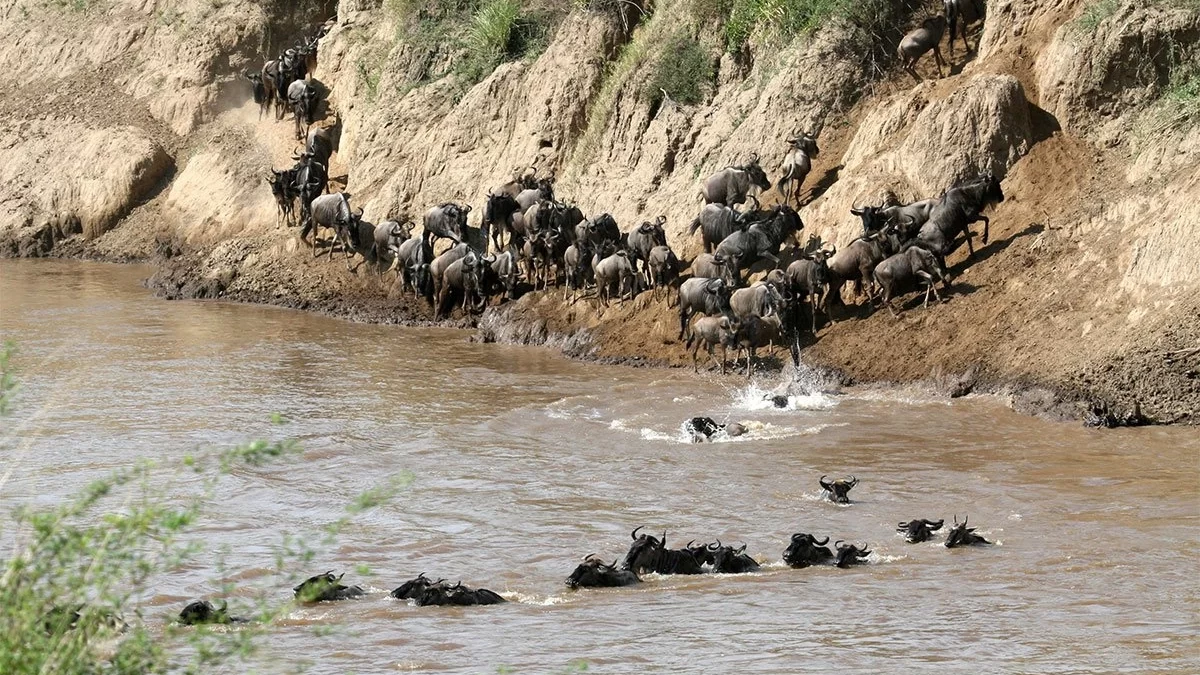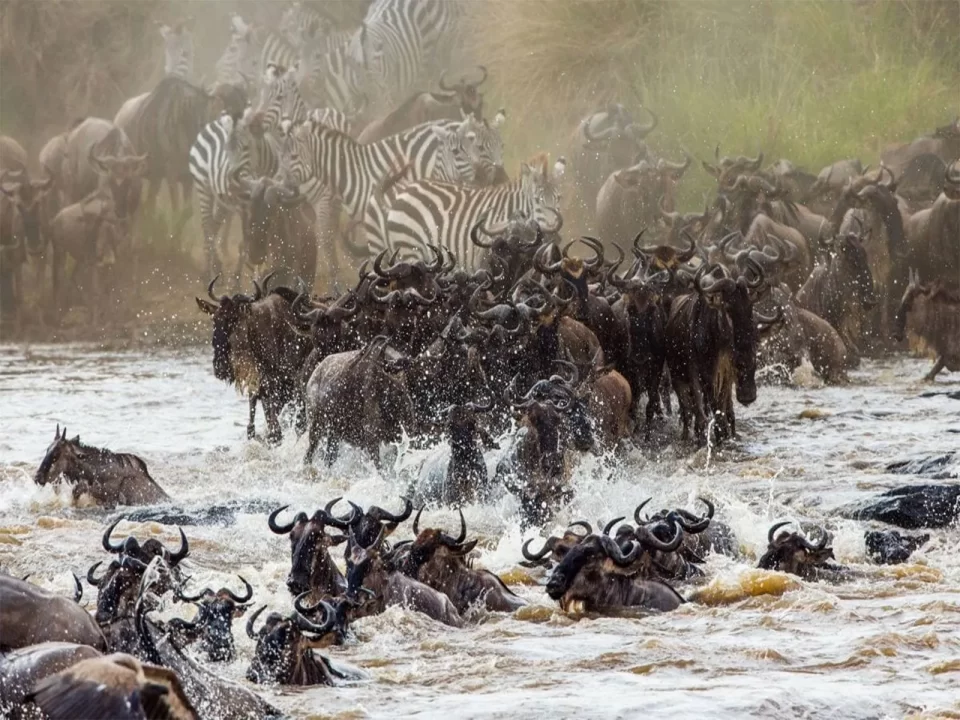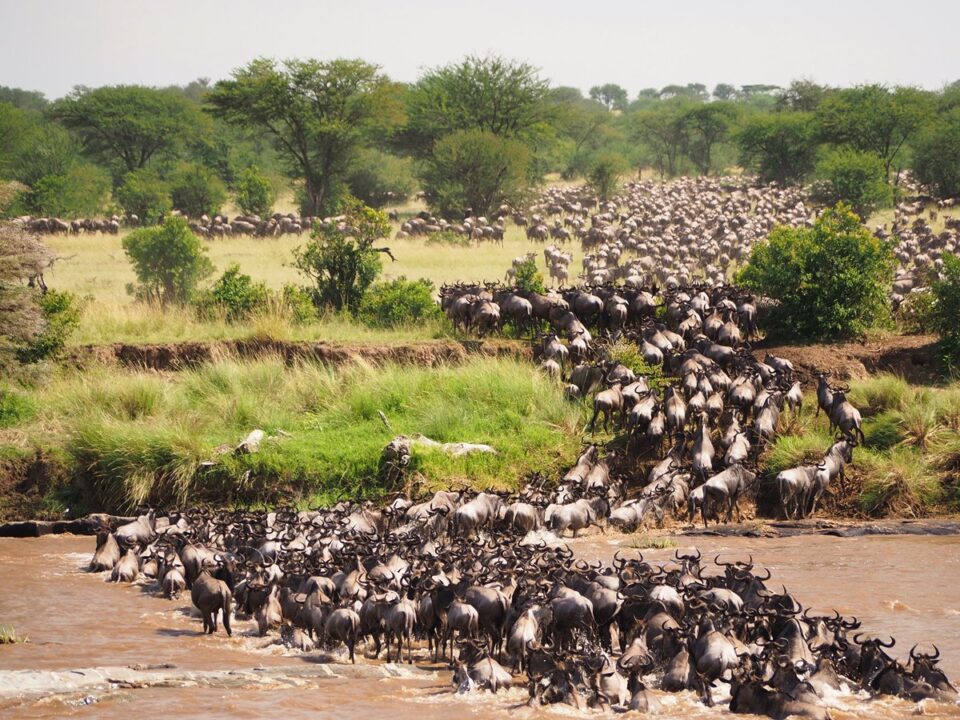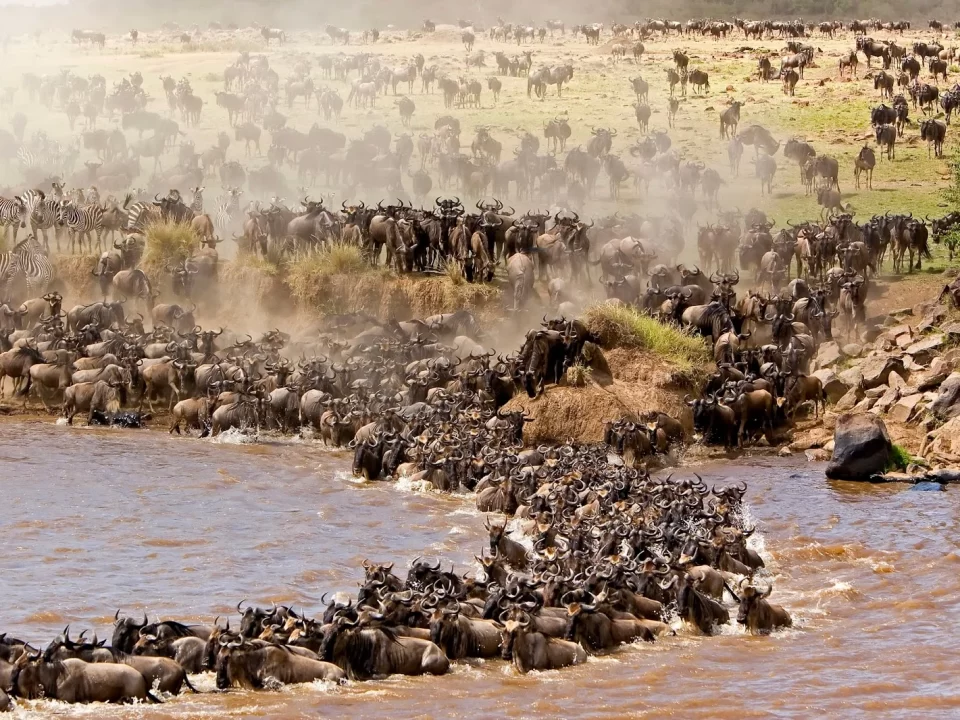Great Wildebeest Migration Safari Guide

The Annual Wildebeest Migration Safari
March 7, 2024
Guide to 2024/2025 Wildebeest Migration Safari
March 7, 2024Great Wildebeest Migration Safari Guide: Unveiling the Wonders of 2024-2025 in Kenya and Tanzania
Great Wildebeest Migration Safari Guide — Embark on an extraordinary journey as we navigate through the intricacies of the Great Wildebeest Migration Safari, a phenomenon captivating the wild landscapes of Kenya and Tanzania in 2024-2025. Revered as one of the last mass terrestrial wildlife movements on Earth, the migration serves as the primary allure drawing countless travelers to witness this awe-inspiring spectacle, particularly around mid-year.
The migration, a testament to the brilliance of nature, unfolds as a paradox where timing is of the essence, yet predicting the animals’ movements remains an elusive endeavor. The spectacle of wildebeests, accompanied by zebras and antelopes, crossing the Mara River or responding to rainfall-triggered fresh grazing is a sight to behold. Our expertise, honed since 1998, positions us as seasoned guides to orchestrate Wildebeest Migration safaris, ensuring travelers are in the optimal place at the perfect time and for the best value.
Misconceptions about the Wildebeest Migration:
The Myth of Predictable River Crossings:
Contrary to common belief, even the wildebeests themselves are uncertain about when they will cross. Some plunge into the water immediately, while others linger for days, grazing or retracing their steps. Predicting these crossings remains a wishful endeavor, underscoring the importance of allocating ample time on safari for a chance encounter with this remarkable event.
Beyond July to October:
While many assume that the Wildebeest Migration is confined to the period between July and October, the reality is that it is a year-round spectacle with diverse and equally thrilling events occurring at different times. The popular river crossings align with the high season for safaris (July to October), contributing to the misconception that wildebeests are only on the move during this period. Climate change has disrupted the predictability of rainy seasons in Tanzania and Kenya, emphasizing the need for extended safari durations to accommodate potential variations in the wildebeest calendar.
The Annual Cycle of the Migration:
January:
The herds populate Tanzania’s Serengeti National Park, transitioning south from the northeast region into the Southern Serengeti, Lake Ndutu, and Ngorongoro Conservation Area. Calving season persists until March, offering opportunities to witness both adorable newborns and intense predator action.
February:
Remaining in the far south, the herds engage in the rut, with males competing for mating rights. This stage sets the stage for the fertile females’ later journey to the Mara, Talek, and Grumeti Rivers, heavily pregnant, an extraordinary feat in itself.
March:
Still in the south, the herds gather as grasses deplete, marking the prelude to their northward journey.
April:
Commencing their northward trek, many wildebeests are already in the central and western Serengeti.
May:
Witness the massive herds on the move, forming columns up to 40 kilometers in length as they head toward the central and western Serengeti, preparing for the impending Mara River crossing.
June:
The central and western Serengeti becomes the focal point as the herds gear up for the most challenging phase of their odyssey.
July:
Arriving in the western Serengeti, the herds contemplate the river crossings, navigating the brown waters teeming with Nile crocodiles. Crossings occur unpredictably between May and September, emphasizing the need for advanced safari bookings to secure prime locations for witnessing this natural spectacle.
August:
Survivors celebrate in the northern Serengeti before crossing into Kenya’s Masai Mara National Reserve, a passport-free journey for wildebeests. Private conservancies bordering the reserve offer a less crowded and more exclusive experience.
September:
The herds disperse into smaller groups, with half remaining in the northern Serengeti and the rest sharing tales in the Masai Mara. The Serengeti-Mara ecosystem, artificially divided by humans, hosts the herds, taking advantage of available water and food resources.
October:
The Masai Mara provides the best vantage point, although its smaller size may attract more visitors. Consider exploring private conservancies for a less crowded yet impactful Migration experience.
November:
Short rains commence, prompting the wildebeests to depart the now depleted Masai Mara grasslands, returning to the rejuvenated Serengeti. Rainfall timing remains unpredictable.
December:
Fresh grazing congregates the wildebeests in the north-eastern Serengeti, initiating calving, predator activity, and the cyclical renewal of life.
Key Facts to Remember:
- The bulk of the Migration unfolds in the Serengeti.
- It constitutes a year-round, circular journey.
- Predicting river crossings is challenging but generally occurs between May and September.
- The herds stretch across a vast area with fore-runners and stragglers.
- Optimal viewing of river crossings may involve spending extended periods at specific sites, necessitating advanced planning.
- Wildlife photography enthusiasts may find midday opportunities most rewarding, despite the harsh sunlight and glare.
Intrigued by the prospect of a Great Wildebeest Migration Safari? Contact Trek Africa Expeditions for comprehensive information on the safari guide and secure your booking to witness the wildebeest migration in all its majestic splendor.




